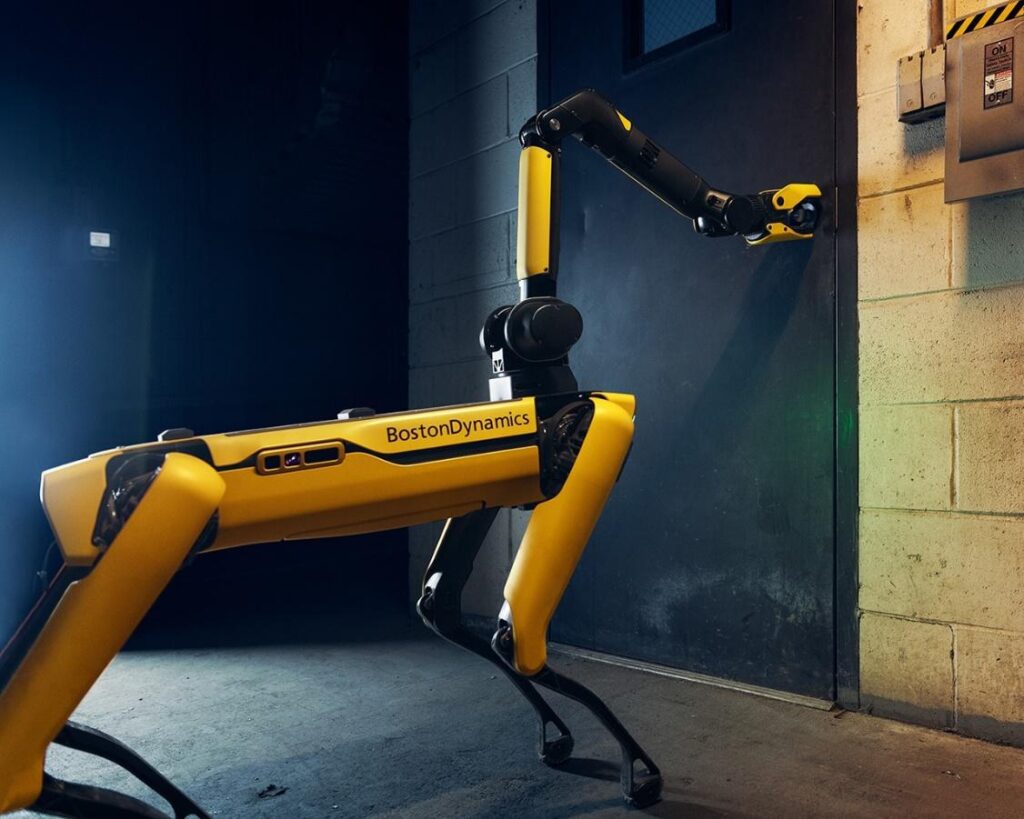In case you’ve been in a coma or living under a rock for the past year, Nvidia Corp. (NVDA) is kind of a big deal.
The company’s chips are in high demand as the “brains” powering the artificial intelligence (AI) revolution, and it can’t seem to make them fast enough. You’ll find them in everything from ChatGPT’s underlying infrastructure to Boston Dynamics’ robot police dogs.
Nvidia released its results for fourth-quarter 2023 last week, and they’re worth revisiting because they were just that unreal. Revenues jumped 22% over the previous quarter and a whopping 265% over the fourth quarter of 2022.
Those numbers would be impressive in a high-flying start-up. But,Nvidia isn’t a start-up. With a market cap of close to $2 trillion dollars, it’s the third-largest company in America. It employs 26,196 people in 35 countries, for crying out loud.
Nvidia is a juggernaut. Yet it’s still growing at a breakneck pace with no signs of slowing.
Now, I’m not here to recommend investing in Nivida today. You’ve probably came across 10 stories in the past week alone recommending that. You don’t need to read another one from me.
I’m more interested in the big picture of what Nvidia’s growth means. So today I’m going to consider the demand behind this growth, including experiments with robotic dogs in some police departments…
Nvidia and Then Some…
It’s important to note that while Nvidia is hands down the dominant player in AI chips, with an estimated 70% of the market, it’s not alone. Amazon.com Inc. (AMZN), Apple Inc. (APPL), Microsoft Corp. (MSFT), Alphabet Inc. (GOOG), and Meta Platforms (META) are all investing billions in developing their own AI chips. So, of course, are traditional chipmakers like Intel Corp. (INTC) and Advanced Micro Devices Inc. (AMD).
So, where are these millions of AI chips going?
The short answer is “everywhere.”
Any industry that can benefit from replacing or augmenting expensive human labor with AI is a potential customer.
Consider the United Kingdom’s plans to use AI-powered robotic guards to patrol nuclear sites. As The Telegraph reported earlier this month,
Britain’s nuclear sites could soon be protected by a “robocop” style police force made up of AI-powered drones equipped with paint bombs and smoke guns.
The Nuclear Decommissioning Authority (NDA), which runs high-security nuclear sites such as Sellafield and Dounreay, wants to build a robotic police force to cut costs and boost security across sites containing radioactive waste…
The NDA also wants its roboforce to carry 360-degree cameras containing facial recognition technology that can spot abnormal behaviour.
This isn’t tech for tech’s sake. The U.K.’s Nuclear Decommissioning Authority made it clear that the goal was to cut labor costs by reducing the need for employees.
The British wouldn’t be the first to experiment with “robocops.” Last year, New York City used Boston Dynamics’ robotic “Digidogs” to search for victims in a collapsed building.
Perhaps more sinisterly, the New York Police Department also is experimenting with using the robotic dogs in some arrest scenarios. That’s a scene that truly resembles something out of Netflix’s dystopian sci-fi series Black Mirror.

The “digidog” has a name: Spot. And yes, Boston Dynamics has been experimenting with ways to power Spot with AI. In fact, it already uses the Nvidia Jetson Xavier NX module.
Let’s step away from the world of robotic K9 police forces for a moment and look at a business use of AI…
Deere & Co. (DE) – the farm equipment company – now has autonomous tractors that can plow or harvest a field without a human farmer present. In other words, even farming – one of the oldest industries – is undergoing a labor-saving productivity boom with the help of AI.
These aren’t toys.
We need this… and here’s why.
Headline inflation is falling, albeit slower than we’d like. But inflation in services is still clocking in at over 5% per year and proving stubbornly hard to kill.
Why?
A Shrinking Labor Pool and a Labor Force in Decline
Inflation in services is so sticky because services require people… and we’re still in the midst of a demographic-based labor shortage that isn’t going away any time soon. There just simply aren’t enough new Gen Z workers entering the workforce to replace the experienced and productive Baby Boomers who are leaving.
If we want to break inflation’s back, we must fix the labor shortage. And given that we can’t snap our fingers and make new, fully trained workers appear out of the ether, that means we need to replace a lot of human jobs with machines… or use tools like AI to squeeze a lot more productivity out of current workers.
This means I don’t have much faith in the Federal Reserve’s ability to get inflation under control. (Remember: These are the same people who thought printing trillions of dollars of new money was a great idea with no potential consequences.)
But I do have faith in capitalism, aided by technology, to deliver the exponential progress we need.
And we’re going to need every bit we can get because, regardless of who takes the White House next February, none of these problems are going away.
If the shadow candidate our friend Louis Navellier is watching closely steps onto the election podium, our lives could become substantially worse. Louis has prepared a special presentation to explain why and how to prepare. Watch that now.
To life, liberty, and the pursuit of wealth.